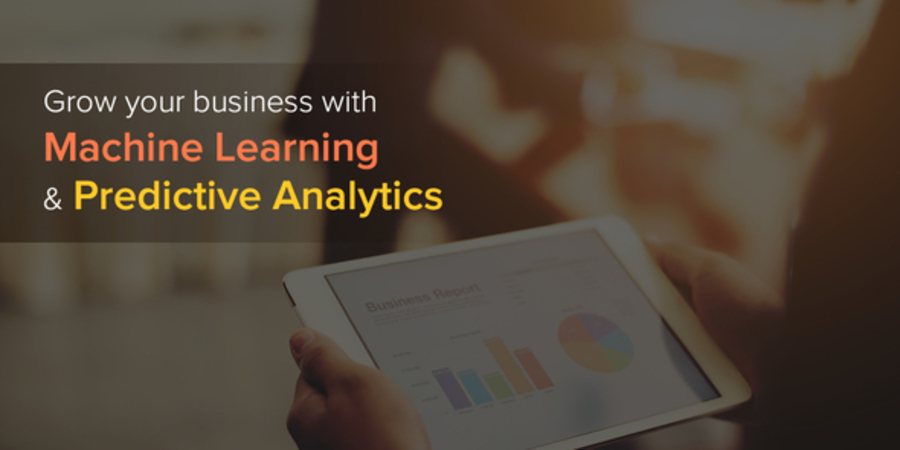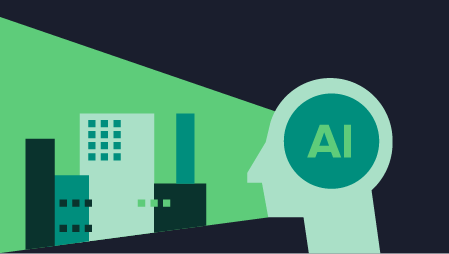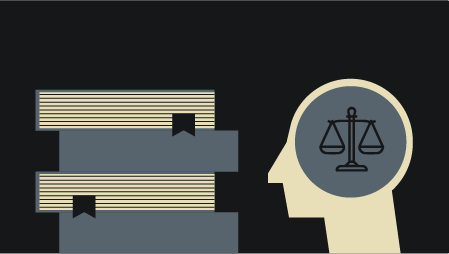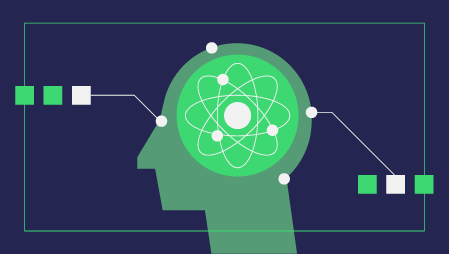In a consumer centric market, it is becoming increasingly important for businesses to keep up with their changing needs. It could be a market trend or a simple drift in the kind of solutions that the consumers are looking for. That’s where predictive analytics comes into play.
What is predictive analytics?
Predictive analytics is a brand of advanced analytics that are used to make predictions about unknown future events based on current consumer data sets and behaviour. It uses various techniques from data mining, statistics, machine learning and artificial intelligence to pull out data points that can predict and conclude future events.
Simply, the consumer patterns found in historical and transactional data are used to identify risks and opportunities for the business in the future.
What are the technologies we’re talking about?
Predictive analytics majorly uses 3 technologies:
1. Data mining: A interdisciplinary subfield of computer science, data mining refers to the process of discovering patterns in large data sets.
2. Machine learning: A form of artificial intelligence, machine learning allows computers to learn something through experience, testing and adaptation.
3. Predictive modelling: The combination of data mining and the probability to make future predictions is called a predictive model. These are used to predict actions like when the customers are more likely to purchase a certain product range, go out more, etc.
Why should your business use predictive analytics?
Predictive analytics has a huge role to play in business growth. It helps organizations collate data points of their customers across all online and offline channels, extract actionable insights from it and enables them to create a roadmap for growth accordingly.
The in-depth analytics give you insights into:
- Which target segment will be the most interested in their offerings
- What products and services are they more likely to buy
- Where are they purchasing the products and services from
- What nudges them to make the purchases
- How much are they really willing to spend
- What will nudge the consumer to spend more
Here’s why your business should not think twice before using predictive analytics:
1. Identify high value target groups
When was the last time you ran a social media campaign and converted 100% of the leads you generated? There is nothing more defeating than having to work through unqualified leads as it eats into all your resources.
With the use of predictive analytics for businesses and predictive profiling, you can automate the lead scoring process. This prioritises the leads that need to be followed up right away, having a higher chance of conversion and separates out those that can be put on the backburner. With predictive profiling, the marketing and sales teams can focus on more conversions from each campaign.
“The #1 business problem that companies can solve with the help of predictive analytics tools, is making sense of large amounts of unused business data.”
Will Hayes, CEO, Lucidworks
Customer retention is the real growth hack for businesses – especially when the competition is on the rise. But following up the first few interactions can be a tedious task and personalizing each conversation can be even more difficult. 2. Automate customer interactions
Using predictive analytics, businesses can predict a consumer’s actions in the future and gauge the communication that will be needed to keep him hooked to the brand. The organization can then use automation for their customer engagement and retention campaigns, driving higher conversions and lowering their churn rates.
3. Allocate resources more effectively
When in their growth stages, organizations tend to go all in with their resources – their teams and the money they need to pump into marketing, sales, support and other business processes. Predictive analytics will help them identify the roadblocks in their current processes, give them insights into how to make the process better and at the same time, enable them to plan and allocate the resources on what’s working the best for them.
This also holds true in terms of the locations that a business is targeting for growth. Predictive analytics can help them identify market opportunities beforehand and gauge consumer responses for better acquisition campaigns.
4. Align sales and marketing better
One of the most common challenges that most businesses face, is aligning their sales and marketing team. While marketing is able to bring in the leads and the sales team does their best to close them, the two rarely make any communication about customer interactions to further optimize the cycle. With predictive analytics, the two teams will not just be able to identify patterns in the leads being generated; but also be able to effectively communicate the organization message for a smaller sales cycle.
“Predictive analytics can give a developer or a marketer, unprecedented data to help them understand more about users, including social value.”
Dmitri Williams, CEO, Sensei and Co-Founder of Ninja Metrics, Inc.
5. Identify future patterns and opportunities
Making use of predictive analytics, you can gather your performance data to make business decisions about future projects. This includes predicting the changing market trends in the niche you are in, how your consumers might make purchases and how you can reach out to them more effectively. Predictive analytics basically reflects on the future performance of your business model, letting you analyse the risks and determine the growth of your organization.
Are organizations using predictive analytics?
Predictive analytics and machine learning have become a core part of some of many business processes at the biggest of organizations.
For instance, Netflix.
Netflix has 117.58 million worldwide streaming users. But every time that you log into your account, you see a dashboard that is more customized for your preferences. This includes what you’ve already watched and most importantly, what you ‘might’ like to watch. That’s predictive analytics in play.
The online streaming platform, tracks multiple events during a user session. It then extracts data to predict their behaviour in te next session, enabling them to engage the users better even when they are not logged into their accounts. Some of the events that Netflix tracks and implements the predictive modelling on, are:
- What day do you watch most of the content
- What date and time did you watch that content
- When did you play, pause, rewind or fast forward the content
- Where are you accessing your Netflix account from
- When do you leave the content
- What type of content you browse
- What does your scrolling behaviour look like (what elements do you interact with)
That’s why every time a user does log in, they are directly engaged with something of their interest. This has kept the churn rate of Netflix users at bay and has also helped them optimize their channels of acquisition, engagement and retention – including the efforts they put in, on social media.
You can read more about how Netflix uses big data and predictive analytics for consistent growth, here.
Getting started with predictive analytics
One of the most important things that organizations need to understand before getting started, is the difference between a fad and actual technology.
There are multiple products that promise the use of predictive analytics and machine learning, but use only a very small segment of the same. To implement advanced analytics into your business processes, it is vital to start by understanding the various predictive models, identifying what your business needs and how you can get started with the same.
That’s where you trust experts.
If predictive analytics has been on your radar for a while and has left you overwhelmed, join us for a course with Larry Bookman. With 25 years of expertise in applying predictive modelling for organizations across different industries, he answers it all for you during the course. He’s here to help you understand the basics as well as the advance technologies that predictive analytics makes use of.




